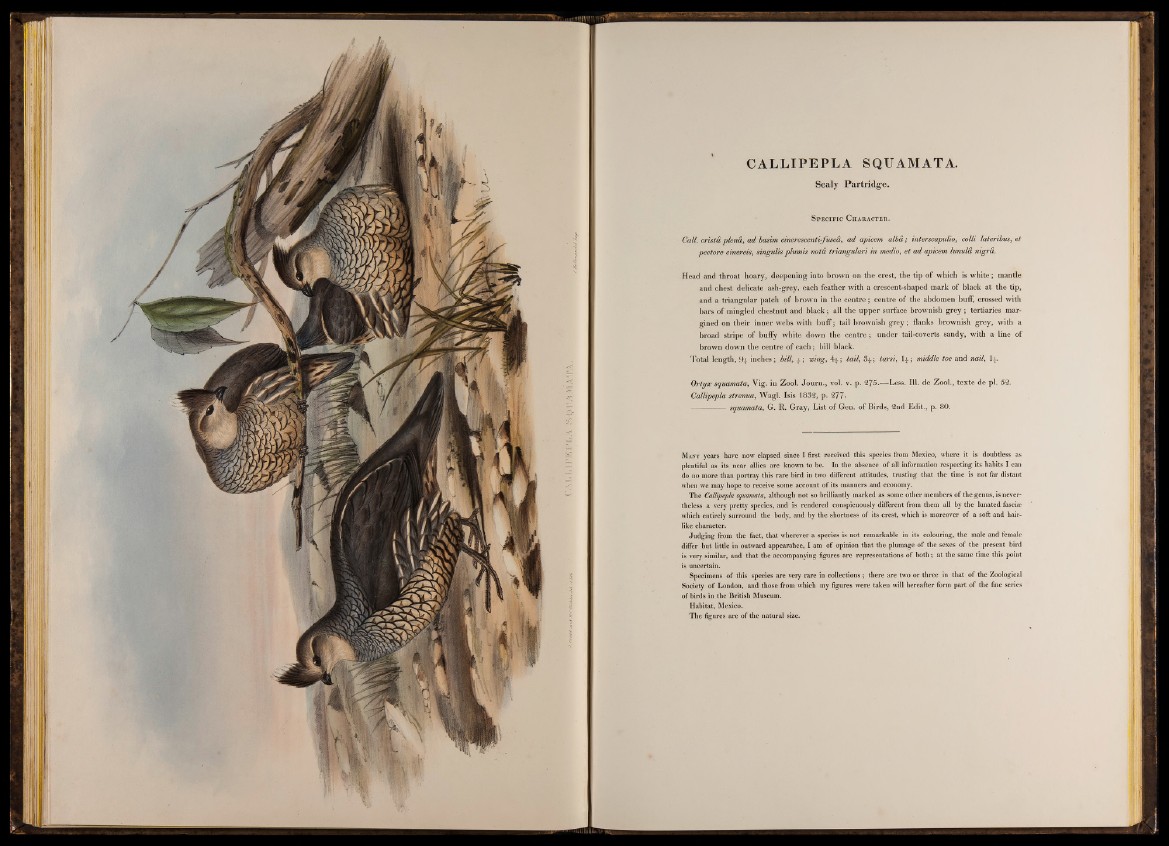
Scaly Partridge.
S p e c if ic C h arac t er .
Call, crista plena, ad basim cinerescenti-fusca, ad apicem a lb a ; interscapulio, colli lateribus, et
pectore cinereis, singulis p lim is nota triangulari in medio, et a d apicem Iwiula nigra.
Head and throat hoary, deepening into brown on the crest, the tip of which is w hite; mantle
and chest delicate ash-grey, each feather with a crescent-shaped mark o f black at the tip,
and a triangular patch of brown in the centre; centre o f the abdomen buff, crossed with
bars o f mingled chestnut and black ; all the upper surface brownish grey ; tertiaries margined
on their inner webs with buff; tail brownish grey ; flanks brownish grey, with a
broad stripe o f buffy white down the centre ; under tail-coverts sandy, with a line of
brown down the centre o f each; bill black.
Total length, 9a inches; bill, ^ ; wing, 4 a ; tail, ; tarsi, 1a ; middle toe and nail, 1a.
O rty x squamata, Vig. in Zool. Journ., vol. v. p. 275.— Less. III. de Zool., texte de pi. 52.
Callipepla strenua, Wagl. Isis 1832, p. 277*
-------------- squamata, G. R. Gray, List of Gen. o f Birds, 2nd Edit., p. 80.
Many years have now elapsed since I first received this species from Mexico, where it is doubtless as
plentiful as its near allies are known to be. In the absence of all information respecting its habits I can
do no more than portray this rare bird in two different attitudes, trusting that the time is not far distant
when we may hope to receive some account of its manners and economy.
The Callipepla squamata, although not so brilliantly marked as some other members of the genus, is nevertheless
a very pretty species, and is rendered conspicuously different from them all by the lunated fasciae
which entirely surround the body, and by the shortness of its crest, which is moreover of a soft and hairlike
character.
Judging from the fact, that wherever a species is not remarkable in its colouring, the male and female
differ but little in outward appearahce, I am of opinion that the plumage of the sexes of the present bird
is very similar, and that the accompanying figures are representations of both; at the same time this point
is uncertain.
Specimens of this species are very rare in collections ; there are two or three in that of the Zoological
Society of London, and those from which my figures were taken will hereafter form part of the fine series
of birds in the British Museum.
Habitat, Mexico.
The figures are of the natural size.